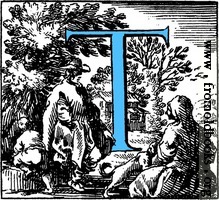On Sheet – the Fox, the Rabbit and the Cabbage
On Sheet – the Fox, the Rabbit and the Cabbage
 here is an old logic problem. You are traveling to market with the following items, a fox, a rabbit and a cabbage. You get to a deep stream and there is a tiny boat on the shore, just large enough for you and one item. You can ferry each of your possessions across – one at a time – but note that if left alone, the fox will eat the rabbit and the rabbit will eat the cabbage. Can you work this logic problem out so everything is safely across?
here is an old logic problem. You are traveling to market with the following items, a fox, a rabbit and a cabbage. You get to a deep stream and there is a tiny boat on the shore, just large enough for you and one item. You can ferry each of your possessions across – one at a time – but note that if left alone, the fox will eat the rabbit and the rabbit will eat the cabbage. Can you work this logic problem out so everything is safely across?
Switching is like this. I’ve switched on model railroads since I was five. I’ve worked up from trailing points only to run-arounds to locals working complex industrial yards. I’ve worked the Salinas sheds and Tuscarora. Even did the timesaver years back and was pretty decent at it (though that arrangement taught me a new switching trick).
I didn’t give it much thought until a Tuscarora session recently. I was working as Tower Operator (OSing trains and hooping up orders). A leverman was sitting next to me. Before us, the Easton Turn had just arrived at Easton to work and return home (disclaimer – we pretend Tuscarora is Easton on my microlayout so that rather than always working as a local switcher, you need to do something different – namely drive into a town, work it, then build your train to return the other direction).
A relatively new guy was on the throttle of the Easton Turn. He’d done okay up until now, but he came into town with a box car and a reefer with a caboose on back, with a facing point switch for both cars. To make things sticky, the cars were in reverse order. So I’m thinking the move is to run around, index the cars into the correct order on the facing turnout, push them in and with the caboose on the front pilot, you are ready to reverse direction and head back home.
I didn’t have good visibility on the moves but I sensed confusion from the leverman when the turn told him what he wanted to do. Then I saw the engine pull forward enough to see. He had the front car still on his coupler and was going to run around, leaving the other car and the caboose. The leverman and I exchanged glances and he shrugged. The turn paused, looking at his lineup and sinking deeper into confusion. Since the MT hopper drag was holding to the east with no way through, I secured my post for a bit and sat next to the Turn’s engineer as his conductor – I didn’t tell him what to do but I kinda nudged him in the correct method. I could see him nod when he finally saw the solution I was driving towards. We got the work done in quick order, the MTs rolling past while we finished work on the siding, and everything was right in the end.
What this made me realize is that switching is like any other game. Take chess (I’m more a “Go” fan, but same thing). After you’ve played for a bit, you learn moves that worked in the past, situations you’ve encountered before. You aren’t looking at cars and sidings but flipping through your bag of tricks. The turn engineer didn’t have this bag. I did. But when he rolled out of Easton west towards Tuscarora, I think he dropped that index trick into his bag. Next time hopefully he’ll remember it.
So yes, the first time you do a switching job, it will be total confusion. But as you do it more, you’ll learn what works and what doesn’t. That’s why you need to stick with it.
On our club layout, we recommend that first-time switchers pick the same job for a couple of sessions so they can get familiar with it, rather than changing out for a new location. You can note that their finishing times drop each run out. They are learning the tricks. I’ve even got a trick for Shelfton on our club layout which has been called the “Pez Dispenser” strategy. Of all the books I’ve written and all the things I’ve done, this will probably be my legacy. Local switchers on our club layout use this trick every time.
As for our burdened market-goer, I heard one solution which was to sit on the river bank, feed the cabbage to the rabbit, then the rabbit to the fox, and then cook the fox and eat it, getting the calories from all three. Then go home and save all that boating-about.
No, that’s not the solution.
